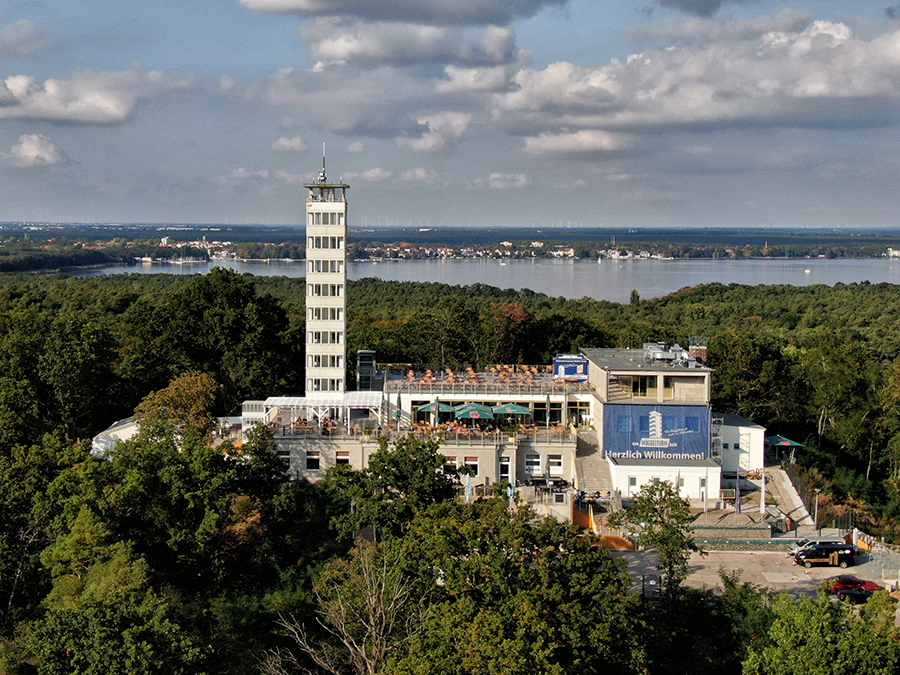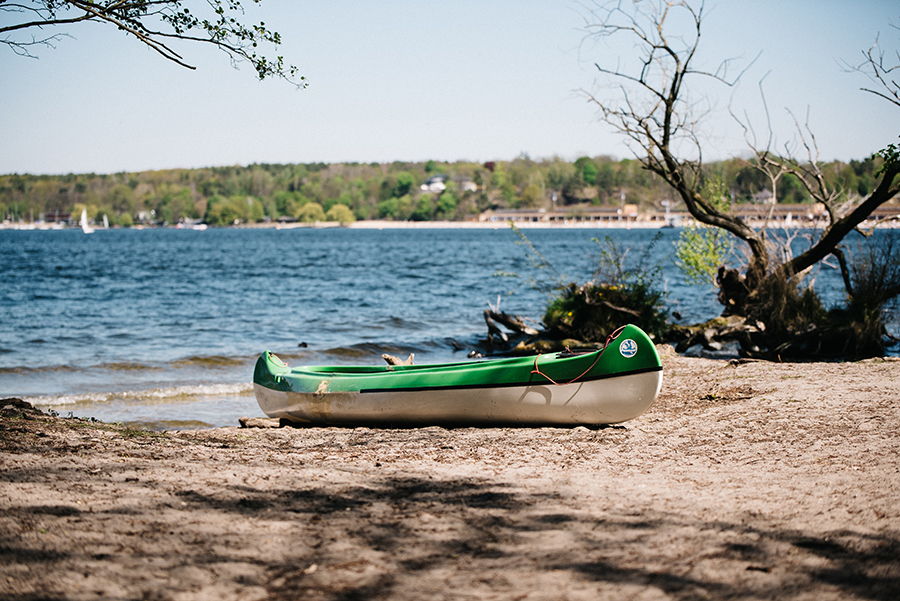With winding paths, secret beaches and crystal clear waters for swimming, Berlin’s lakes are a great reason to visit the German capital.

Despite its proximity to Berlin, Tegeler See can feel like a local secret (Photo: Chris Martin courtesy of visitberlin.de)
When the sun comes out or the leaves begin to fall, Berliners like nothing better than heading to one of 3,000 lakes in and around the city. Unlike in many capital cities, these lakes are perfect for swimming – whether you chose to really act like a local and ditch the swimwear is up to you. The surrounding shores feature well-kept beaches, winding paths and secret shady spots under the canopy of oak, beech and pine trees.
Teufelssee
Found in the shadow of a derelict US Cold War listening station, which itself stands on a man-made hill of rewilded debris and rubble, Teufelssee doesn’t sound particularly enchanting. Even the name – translated to Devil’s Lake – gives nothing away about arguably the most idyllic summer spot in Berlin. Grunewald Forest’s small glacial lake with a monstrous name is itself otherworldly. Surrounded by trees, it’s as much a haven for meditative sunseekers as it is for the rare European bitterling fish that find refuge in the lake.
Tegeler See
Tegeler See is a lot quieter than it used to be. Since Tegel Airport was shut down in 2020 to make way for a new urban quarter (much to the annoyance of anyone with a passport in north Berlin), Tegel has started a new jet engine-free chapter. But it feels like word hasn’t quite got out yet and Tegeler See’s long sandy beaches can feel a bit wild and forgotten at times. You’d half expect to see Jack Sparrow come striding down the driftwood scattered sand, Pommes Schranke in hand. For a totally different vibe, nearby Flakensee, with its bobbing speedboats, has a distinctly Mediterranean feel.
Liepnitzsee

Leipnitzsee’s clear turquoise waters are a world away from Berlin (Photo: Timor Kodal courtesy of visitberlin.de)
Situated around 35 km from Berlin, Liepnitzsee’s clear, turquoise waters, flanked by beeches and pines, feels a world away from the bustling spaetis and crowded flohmarkts of Berlin. For sheer natural beauty, Liepnitzsee is the top pick, and the fact it is not so easy to get to works in its favour, keeping it relatively quiet, at least in the week. A good tip for the fit and adventurous is take the S Bahn to one of Berlin’s northernmost stations and cycle the last hour through Brandenberg’s forest. Reward yourself with a beer at the Zweijahreszeiten cabin on the entrance to Liepnitzsee.
Müggelsee
As the biggest lake in Berlin and the place to be seen on a sunny day in GDR Berlin, Müggelsee has always had a lot to offer. Because of its size (and distance to the opposing shore), to sit on Müggelsee’s sandy lido, with beach volleyball and windsurfers tottering by, is to feel like being by the seaside. However, what makes Müggelsee so interesting is the variety of sights found along the 17km of lakeshore paths, such as German beer gardens, a little rialto bridge in “New Venice,” and Müggelberge, the highest elevation in Berlin.

Müggelturm is a great place to see the whole of Müggelsee (Photo: Volker Gehrmann courtesy of visitberlin.de )
Plötzensee
Overlooked by the twisted piles of metal at the TSR Recycling plant, the Berlin juvenile detention centre and the normally gridlocked Seestrasse, Plötzensee is something of an insider’s secret. While the tourists head to Wannsee, with its perfectly preserved pre-war architecture and Mediterranean-spec white sand, Plötzensee can at times feel like an extension of nearby club Heideglühen. It has a laid-back local feel and is a magnet for the hippest of hipsters, but also boasts 1920s architecture and a beach surrounded by trees.
Schwielowsee
In need of a place to think? Schwielowsee is a smart choice of lake – just ask Einstein, who would roam the lake from his nearby summer house thinking about the universe (probably). Prominent scientists aside, Schwielowsee is surrounded by dense unspoilt forest, home to numerous animal and plant species. There is also a lakeside bathing area that has taken its inspiration from the Caribbean, with a white sandy beach and huge palm trees gently waving overhead. Continuing the holiday vibe, Schwielowsee’s shores host several yoga centres and retreats – perfect for some soul-searching after a weekend of Berlin overexuberance.

Wannsee is a lake steeped in history (Photo: Dagmar Schwelle courtesy of visitberlin.de)
Wannsee
Despite being the most popular lake in Berlin’s surrounding area, it’s impossible to ignore the majesty of Wannsee. A visit is like a step back in time to pre-war Berlin, with swish 1920s architecture and white sand – you can almost hear Marlene Dietrich crackling out of an old gramophone. Try to visit Strandbad Wannsee mid-week (or on a gloomy day) to avoid the crowds and enjoy the 1,275 metre sandy beach in all its glory. Grabbing one of the traditional strandkorbs (hooded beach chairs) seals the deal.